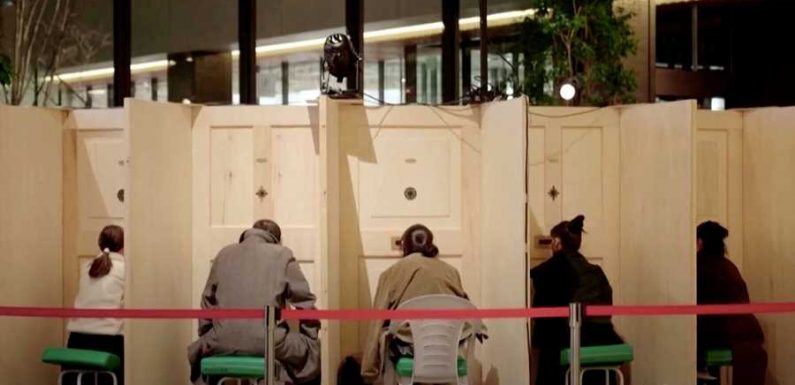
As live theater performances return in various ways around the world, whether it's New York with its pop-up shows or the careful measures that allowed Disney's Frozen to open in Australia, one theater in Japan has taken innovation to the next level.
The dance company Tsuki Akarino Ido Gekijyo, which means moonlight mobile theater in Japanese, built a circular stage with 30 seats, each in an individual compartment separated by wooden panels. Audience members remain physically distanced from one another as they sit on chairs and peer into the performance through mailbox-like slots, the Japanese paper The Mainichi reported. Each six-and-a-half foot by three-foot panel also has another circular hole, resembling a spyhole.
The mobile stage, called "Peeping Garden," can be disassembled and reassembled, allowing it to travel around Japan. The concept debuted in December at Dance House Kogane 4422 in the city of Nagoya, and later moved to Aichi Prefecture, the paper reported. All 12 of the performances have sold out, according to Reuters.
Nobuyoshi Asai, who runs the dance company and serves as its choreographer, told The Mainichi that he sees the concept as a "new stage format that people can appreciate with peace of mind." He also told Reuters that by limiting the scope of vision, viewers are drawn into the performances more deeply.
For 15-year-old Yura Sugiura, one of the performers in the show, the newfound experience allowed her to sink into her craft in a different way. "I couldn't see the faces of the audience, but I was instead able to get into the work and feel a new sensation," she told The Mainichi.
Kazuki Ichikawa, 23, who helped design the stage, told the paper that they experimented to make the viewing experience just right: "We tried various diameters for the peepholes, keeping distance in mind. In fact, we made the peepholes wider at the back to secure the field of view."
Though the safe viewing experience has received much attention, it hasn't paid off financially. In addition to the limited capacity, there's also the added cost of disinfecting the venue, and even government subsidies haven't added up to profits. But Asai says it's more about engaging audiences again. "If we don't do it, artists will lose opportunities to dance and act," he told Reuters. "We want to propose this as a model to bring audiences back to theaters."
Source: Read Full Article









